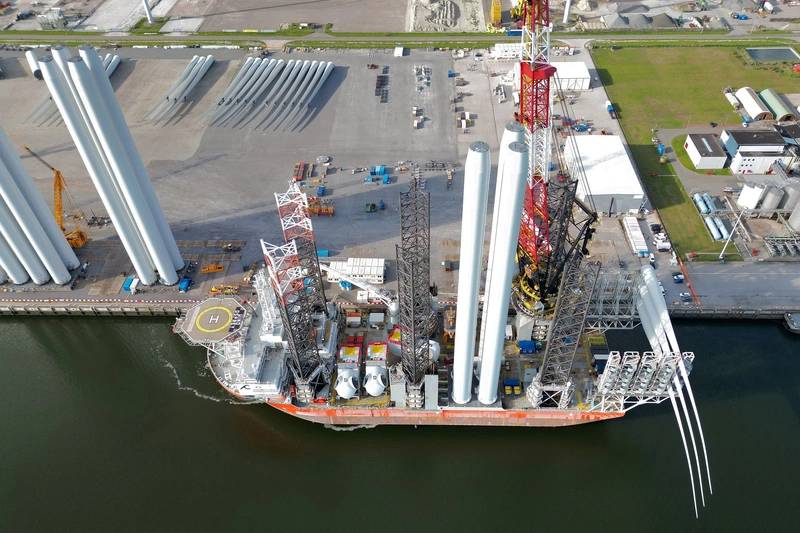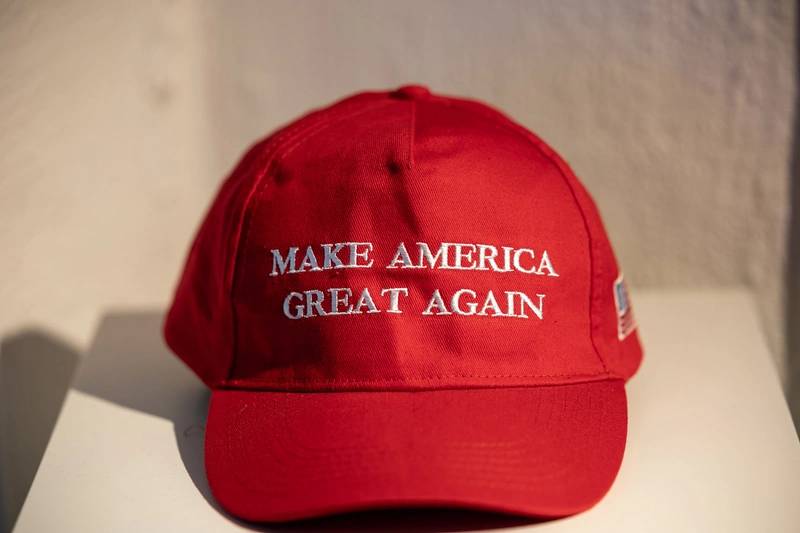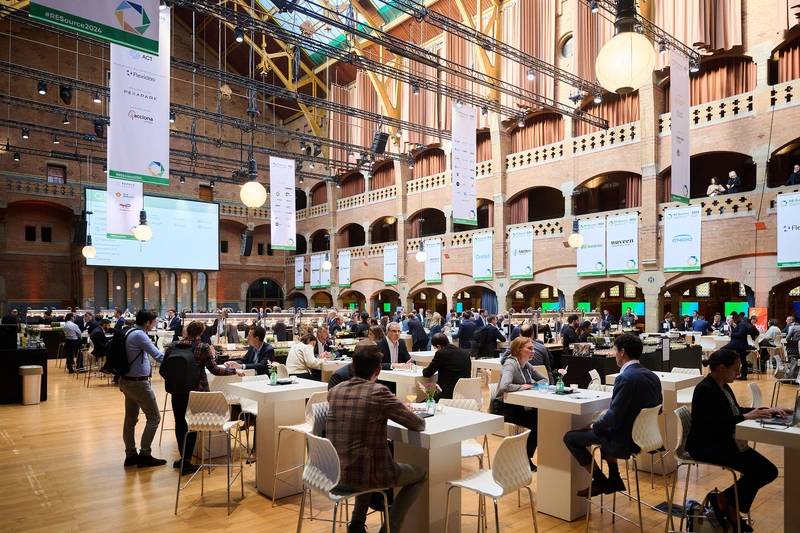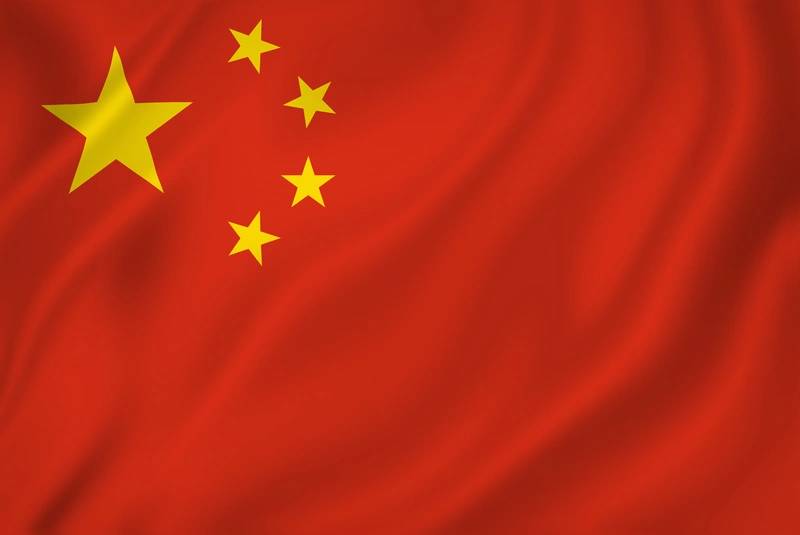Latest News
-
Berkshire, which fell on Buffett's final day as CEO and gained 6,100,000.0% over 60 years,
The price of Berkshire Hathaway Class A shares fell by $600, or 0.1%, to $754,800 on Wednesday. Greg Abel will take over as CEO on Thursday. On Wednesday, the price of Berkshire class A shares fell by $600 or 0.1% to $754,800, and that of Class B shares dropped $1.06 or 0.2% to $502.65 Standard & Poor’s 500 dropped 0.7%. Berkshire investors who have owned the company since 1965 when Buffett became CEO, saw a return that was 6,100,000.00%. This is far higher than the S&P's 46,000%. In 2025, the index was outperforming, and it has been doing so for over a decade. Berkshire, however, never had a down year as Buffett tried to acquire his $1.08 trillion company. Berkshire's subsidiaries include the insurer 'Geico', the BNSF railway, dozens manufacturing and energy companies, and retail brands like Brooks, Dairy Queen and Fruit 'of the Loom. The company ended September with cash and?equivalents of $381.7 billion. Abel, age 63, was hired by Berkshire in 2000, when the company acquired MidAmerican Energy (now known as Berkshire Hathaway Energy). Since 2018, he has served as vice chairman of Berkshire, managing the non-insurance business. Buffett will continue to be chairman. He plans to go every day to the Berkshire office in Omaha Nebraska, which is about 2 miles (3 km) from his home. Ajit Jain, vice chairman, will oversee the insurance business of Berkshire, while Abel continues to monitor the BNSF manufacturing, energy and manufacturing businesses. Adam Johnson, the chief executive officer of NetJets' luxury plane unit, will oversee Berkshire’s consumer products, services and retail businesses. Abel was doing this. Berkshire Investments has not announced who will be in charge of its equity portfolio. Apple and American Express were among the 283.2 billion dollars of stocks that Berkshire held as of September 30. Todd Combs, Ted Weschler and other people who worked on the?portfolio were thought to be in line for the position, but Combs has left JPMorgan Chase this month and Buffett stated that Abel can handle it. Berkshire didn't immediately respond to our request for comment. Reporting by Jonathan Stempel, New York; Editing and proofreading by David Gregorio & Alistair Bell
-
EIA reports that U.S. crude imports dropped last week, reaching their lowest level since February 2021.
The Energy Information Administration reported that the U.S. imported its lowest amount of crude oil in five years last week, as companies sought to avoid a heavy tax at the end of the year on oil stored in storage. According to EIA, U.S. crude imports fell last week to 4,95 million barrels a day. This is the lowest level since February 2021. John Kilduff, partner at Again Capital, explained that the?ad value tax was a burden on crude oil imports. Kilduff stated that "companies" will delay taking inventory of crude oil and refined products when they reach this point, especially in December. EIA data revealed that the U.S. crude inventory has increased due to lower imports, and robust refining activities. EIA data shows that oil imports from Mexico dropped to 71,000 bpd during the week ending December 26, the lowest ever recorded. This was lower than the previous all-time high for U.S. crude imports from Mexico, which reached 131,000 bpd during the week ending Nov. 28th 2025. The Mexican state oil company, Pemex, must maintain its production at 1.6 million barrels per day (bpd) of crude oil and condensate. This is a sharp drop from the 3.4 millions bpd that it produced 20 years ago. Reporting by Arathy S. Somasekhar in Houston and Georgina M. McCartney; editing by Chizu N. Nomiyama
-
Critical Metals CEO expects Greenland deals to be closed in Q1 of 2026.
Critical Metals' top boss said that the company expects to complete the remaining 25% of "offtake agreements" for its Tanbreez project in Greenland by early 2026. It will also be open to investment from Washington. Tony Sage, CEO of Rare Earths, said that the Middle East's interest, which includes potential partners in Saudi Arabia and other energy-rich countries such as Bahrain, Oman, Qatar and Saudi Arabia, is a reflection of the efforts made by states with high energy costs to develop a processing capacity for rare earths, supported by lower electricity costs and quicker permits than the U.S. And Europe. Sage says that the company has pre-sold 75 percent of its planned production, divided between Europe and the U.S., in order to diversify supply to reduce geopolitical risks. Trump's administration is intensifying efforts to secure U.S. mineral supply chains, and has shifted some federal funding from grants to direct equity stakes. Washington wants to reduce its reliance on the market leader China. Trump stated last week that Greenland is vital to U.S. national security, and that an envoy that he appointed for the island will "lead" the charge. Four people with knowledge of the matter said in October that Trump administration officials had discussed taking a stake on Critical Metals. We would welcome it even though we did not ask for it. Sage stated that they had asked for a grant through the Defence Production Act. The report said that the Trump administration had considered converting this grant into equity if it were to be awarded. The White House has not responded to a request for comment. Sage stated that Critical Metals will begin mining in 2027 and first production is expected to start by mid-2028. Greenland's capital costs will likely total $500 million, while downstream processing facilities could cost up to $1 billion. Sage also said that the Austrian project for lithium remained on hold until the price of the battery metal recovered. Arunima Kumra in Mumbai, Ernest Scheyder for additional reporting; Veronica Brown and Anil d'Silva for editing.
-
The blue-chip FTSE100 stalls at a record high and seals the strongest annual run since 16 years
The UK's FTSE 100 Index paused at record levels on Thursday in the final stretch to 2025, wrapping up its biggest annual gain in sixteen years in a shortened session. The blue-chip FTSE 100 closed 0.2% lower than the previous day, when it had reached a new record. The domestically-focused FTSE 250 midcaps index?declined 0.4%. Markets closed early on January 1 to avoid the New Year's holiday. The FTSE 100, Britain's blue chip index, outperformed major global markets by 2025. This was boosted?by the expectation of more Bank of England rate reductions, its strength in financials,?miners, and its appeal as a relatively inexpensive diversifier during periods of global volatility. The index increased by more than 21% in the past year. This is its best performance since 2009 and a fifth consecutive annual gain. Comparatively, the pan-European STOXX 600 rose 16.6% while the U.S. S&P 500 gained 17.2%. In a close vote earlier in December, the BoE announced its fourth 25 basis-point reduction of the year, and indicated that the pace of easing, which was already slow, could be slowed further. Resources-heavy FTSE 100 gained support from mining companies Fresnillo and Endeavour?Mining, as well as Antofagasta, who benefited from surging prices for gold, silver, and copper this year. Diageo, the world's leading spirits producer, and Bunzl, the largest business supplies distributor, both fell by around 37%. Other record highs were out of reach. The midcap index rose 9% in 2025, but remained almost 8% below the peak of 2021. Meanwhile, the FTSE Small Cap Index rose 10% and closed just 1.5% shy of its 2021 record.
-
Copper prices fall at the end of the year after 2025's record high.
The dollar strengthened on Wednesday, and some investors took advantage of thin liquidity to profit. A year-end rally had pushed the metal up to a new record this week. It was now on track for its largest annual gain in sixteen years. The benchmark three-month copper price on the London Metal Exchange fell 1% by 1055 GMT to $12,425 per metric ton, after hitting a record high of $12,960 Monday. "We have seen a reaction in the last few days to what happened on 2025. The dollar has strengthened after?this years weakness, and copper is retreating from its recent highs," stated Dan Smith, managing Director at Commodity Market Analytics. Copper, which is used for power and construction, jumped 42% this year as mine disruptions fueled concerns over a tightening supply. The rally was also driven by a weaker dollar, which makes dollar-denominated goods cheaper for holders of foreign currencies. Speculators who anticipated a surge in demand due to the AI boom and the energy transition bought commodities. SHORT-TERM SESSIONAL SUPPORT Smith stated that seasonality would provide short-term support to copper in the physical market. The first quarter is usually supportive of the industrial cycle, with stock builds ups before summer. The demand for metals in China, which is the world's largest metal consumer, continues to be higher than expected. He added that imports between January and November are only down 3% on a year-on-year basis. Yangshan Copper Premium The price of copper in China, which is a measure of Chinese demand for imported copper, has ended the year at $51 per ton after reaching a three-month peak of $55 last weekend. The outlook for copper in the year 2026 is dependent on the policies of U.S. president Donald Trump, as U.S. Tariffs are driving the CME Premium to the LME. The premium on the metal has led to a tightening of availability in traditional consumption centres. "I anticipate that the inflows will continue in the short term. Smith stated that he does not expect a sudden reversal of these flows, since they are largely driven by arbitrage, and still subject to U.S. policies, which can be difficult to predict. Other LME metals saw aluminium rise 0.2% to $ 2,984.50 per ton. Zinc fell 0.8% at $3,099.50. Lead gained 0.4% at $2,018.50. Tin dropped 2.0% to $41,140. Nickel lost 0.6% at $16,715.
-
The London blue-chip FTSE 100 is on course to end the strongest year since 16
The UK's FTSE 100 Index paused at record levels on Thursday in the final stretch to 2025, hoping to close out its biggest annual gain in sixteen years in a shortened session. Blue-chip FTSE 100 remained flat at 0902 GMT, after having closed on a record high a day earlier. The midcap index, which is primarily focused on the domestic market, fell 0.3%. The trading activity was low, with the markets expected to close at half-past noon on January 1, ahead of New Year's Day. After years of underperformance the blue-chip FTSE 100 will 'outpace major global markets? in 2025. This is due to expectations of more Bank of England rate reductions, strength in financials, miners, and its appeal as a cheap diversifier in times of global volatility. The index has risen by more than 21% in the past year. It is on track to achieve its best performance since 2009, and a fifth consecutive annual gain. Comparatively, the pan-European STOXX 600 rose 16.6% while the U.S. S&P 500 gained 17.2%. In a vote that was narrowly won, the BoE announced its fourth 25-basis point cut of the year, and signaled the pace of easing, which had already been gradual, could slow down further. The FTSE 100, which is a resource-heavy index, benefited from the'surging gold, copper and silver prices in this year. Bunzl, Diageo, and other business supplies distributors fell by around 37%, making them the index's worst laggards. (Reporting and editing by Nivedita Battacharjee in Bengaluru.)
-
Iron ore gains in an annual recovery fueled by steel exports
Iron ore futures were traded in a narrow band on Wednesday but defied fears of a decline in the first quarter of 2025 on?the back of resilient demand from China, a top consumer of iron ore. The May contract for iron ore on China's Dalian Commodity Exchange closed the daytime trading 0.57% lower, at 789.5 Yuan ($112.97) per metric ton. However, it posted an annual increase of 1.3%. As of 0736 GMT the benchmark February iron ore traded on?the Singapore Exchange had risen 0.2% to $105.55 per ton. This represents a 5.1% annual gain. Prices for the main steelmaking ingredient were under pressure earlier this year due to expectations of a glut of supply and forecasts that demand would be weakened in China. Iron ore prices are still supported by China's consumption, even though the?crude-steel output is expected to drop below 1 billion tonnes this year. Cost competitiveness of blast furnace-based steelmaking kept operating rates high, boosting iron ore demand, although the cleaner electric-arc-furnace-based steelmakers had to scale down output when margins were squeezed by dwindling local demand and resilient ore prices. Steel exports are expected to reach a record in 2025, despite the increasing protectionist measures around the world. This will offset sagging Chinese property demand. Ore prices will be supported in the short term by a rush of steelmakers restocking ahead of the Lunar New Year holidays in February. The upside potential will be limited by a combination of sluggish demand for steel and rising?portside stocks. On Wednesday, the DCE showed mixed results for other steelmaking components. Coking coal was up 0.45% while?coke was down 1.25%. The benchmarks for steel on the Shanghai Futures Exchange have been moving sideways. Rebar fell by 0.48%. Hot-rolled coils dropped 0.52%. Wire rods gained 5.66%. Stainless steel firmed up 0.57%. $1 = 6.9883 Chinese Yuan (Reporting and editing by Sonia Cheema, Subhranshu Sahu and Ruth Chai)
-
Sources say that China has set import quotas on naphtha for 2026.
Three trade sources said that China had allocated naphtha import allowances to the 'key importers' in the first batch for 2026. The volumes should remain essentially the same from this year onwards. According to two people, the state-owned Sinopec (22,4 million barrels) as well as CNOOC (2.11 million metric tonnes) were each allocated 2.52 million metrictons. One of the sources said that Ningbo Zhongjin Petrochemical owned by Rongsheng Petrochemical was allocated 750,000 tons. Sources declined to name themselves as they were not authorized to speak in public. Requests for comments from the Ministry of Commerce, Sinopec CNOOC, and Rongsheng Petrochemical were not immediately answered. Beijing controls the imports of naphtha (as a feedstock important for petrochemical production) via a quota-based system similar to that used in its crude and refined product exports. Sources said that Exxon Mobil, BASF and other foreign cracker companies would also receive significant quantities in the first batch. However, the exact volumes are not yet known. BASF announced on November 5 that it is in the process to start up its new 1 million-ton per annum?crackers and derivatives units in Zhanjiang in southern Guangdong Province. China imported 15.44 million tons in the first 11 months of this year. The 2025 quota is about 24 million tons. The 2025 quota had not been fully used. One of the sources stated that Beijing will release the second batch 2026 import quotas for naphtha in the middle next year. (Reporting and editing by Florence Tan, Thomas Derpinghaus and Siyi Liu; Reporting by Trixie YAP, Siyi Liu, and Sam Li)
Global Offshore Wind Stumbles to the End of '24

Soaring costs, project delays and limited investment put targets out of reach
After a year of canceled projects, broken turbines, and abandoned lease sales, the global offshore wind industry no longer has much chance to hit the lofty targets set by governments in the U.S., Europe and elsewhere ... with the exception of China.
Reuters spoke to 12 offshore wind companies, industry researchers, trade associations, and government officials in six countries to come up with a global picture of the state of the industry and its outlook, and found soaring costs, project delays and limited supply chain investment were hobbling installations.
"We're pretty far away from these targets," Soren Lassen, head of offshore wind research at energy research firm Wood Mackenzie, said in an interview. He said offshore wind farms now have a global average cost of $230 per megawatt-hour (MWh) – up 30% to 40% in the past two years and more than triple the average of $75/MWh for onshore facilities.
That has companies retreating. BP last month said it was considering selling a stake in its offshore wind business, and Equinor earlier this year abandoned investments in Vietnam, Spain and Portugal. Meanwhile GE Vernova one of the industry's top turbine suppliers, is not taking new orders.
"We do not foresee adding to (our) backlog without substantially different industry economics than what we see in the marketplace today," GE Vernova CEO Scott Strazik said on a recent investor call.
World governments had set a global target last year of tripling overall renewable energy use by 2030, something the International Renewable Energy Agency (IRENA) said would require offshore wind capacity to surge to 494 GW by the end of this decade, from 73 GW currently.
IRENA Director-General Francesco La Camera told Reuters offshore wind is now projected to fall short of its target by a third. Estimates by three other prominent research firms project that the world will not reach 500 GW of offshore wind installations until after 2035.
 Copyright Alexander/AdobeStock
Copyright Alexander/AdobeStock
- THE TRUMP EFFECT
Governments in Europe, the Americas and Asia have sought to prop up the sector with national targets aimed at attracting deep-pocketed developers including major global energy companies Equinor, Orsted, RWE and Iberdrola.
The United States, for example, set a goal in 2021 of 30 gigawatts of offshore wind by the end of this decade, but had less than 200 megawatts operating as of May of this year, according to the National Renewable Energy Laboratory.
The outgoing administration of U.S. President Joe Biden issued permits for 15 GW of projects, held six lease sales on multiple coasts, and extended tax credits to the industry.
But U.S. offshore wind has been roiled since last year by canceled projects and contracts, suspended government auctions, and a high-profile construction accident at the country's first major commercial project.
The industry is now worried that President-elect Donald Trump, will follow through on an election campaign promise to dismantle the industry's progress, possibly by withholding lease auctions. "Given the results of the U.S. elections, we see higher risks than before for the timely implementation of offshore wind projects there," Michael Mueller, finance chief of German offshore project developer RWE, told journalists on an earnings call this month.
Energy research firm Rystad said it expects the United States to reach less than half of its 2030 target.
Representatives of the Biden administration and Trump's transition team did not provide comment for this story.
Carl Fleming, a partner at law firm McDermott Will & Emery who advises the White House on renewable energy policy, told Reuters the U.S. would struggle to miss its target regardless of who is in the White House, given market conditions.
 Image courtesy WindEurope
Image courtesy WindEurope
- EUROPE ALSO FALLS SHORT
In Europe, Petra Manuel, offshore wind analyst at Rystad, expects countries with the highest offshore wind targets - the United Kingdom, Germany and the Netherlands - to reach about 60% to 70% of their goals. Nations with less ambitious targets, including Belgium, Denmark and Ireland, are also expected to come up short, he said.
Industry trade group WindEurope, meanwhile, said it expects the European Union to have 54 GW of offshore wind capacity by 2030, about half of the 120 GW North Sea countries pledged.
EU Energy Commissioner Kadri Simson told Reuters that delays in meeting targets could not be ruled out, but that none had been formally flagged by member states.
Britain, the second-biggest offshore wind market after China, will also miss its goal of 60 GW by 2030, said Damien Zachlod, managing director of offshore wind developer EnBW Generation UK.
The UK held its best-funded auction yet in September, adding 4.9 GW of new agreements. But future auctions will require far larger volumes to reach 60 GW on time, he said.
"It will be very, very challenging and we won't hit the target by 2030," he said.
A spokesperson for the UK government did not immediately provide comment.
 Copyright somartin/AdobeStock
Copyright somartin/AdobeStock
- & THEN THERE'S CHINA
China, which became the global leader in offshore wind in 2022, is bucking the global trend [though it is a closed market].
Beijing has supercharged its industry with subsidies and low financing costs. Most of the sector's players are state-owned, and have access to locally-made offshore wind components.
China accounted for more than half of 2023 offshore wind installations, with 6.3 GW, and the Global Wind Energy council trade group estimates the country will install 11 to 16 GW annually in the next two to three years.
Sourcing cheap equipment from China would help reduce costs for developers in Europe, Japan and the United States, but governments there have sought to encourage local production to reduce reliance on Beijing.
Elsewhere in Asia, nations including Vietnam, Japan, South Korea and Taiwan have sought to expand offshore wind but also face difficulties linked to soaring costs and regulatory uncertainty.
Japan, for example, has set ambitions of building up to 45 GW of offshore wind capacity by 2040, up from less than 1 GW today. But the nation's auctions to date have been small, and the industry is constrained by laws preventing non-Japanese vessels from operating in offshore wind areas.
Rebecca Williams, deputy CEO of the Global Wind Energy Council trade group, acknowledged there is a risk the industry could miss its targets, but said hitting them is still possible with the right policies.
"Of course, whenever there's a target, there's a risk that that target might not be met," Williams said on the sidelines of the COP29 conference in Baku.
"But the target is not the thing that's going to get the turbines in the water."
(Reuters)
